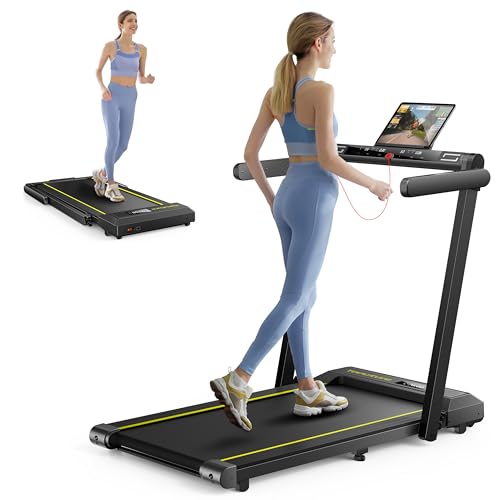Community
커뮤니티| You'll Be Unable To Guess Treadmill Incline Workout's Secrets(5.45.37.28) | |||||
| 작성자 | Arielle Corrie | 작성일 | 24-10-24 00:10 | 조회 | 57 |
|---|---|---|---|---|---|
관련링크How to Use a Treadmill Incline Workout
 Many treadmills let you change the slope. Walking at a high incline mimics walking uphill and is more efficient than walking flat. Many treadmills let you change the slope. Walking at a high incline mimics walking uphill and is more efficient than walking flat.It is a low-impact training that could be a viable alternative to running for those who suffer from joint pain. It can be performed at a variety of speeds and is simple to alter according to the fitness goals. The right inclined It doesn't matter if you're a beginner on the treadmill or a seasoned pro, incline-training provides a myriad of possibilities to spice up your cardio workouts. Adding incline on a treadmill will give you the feel of running outdoors without all the pounding of your joints. Boosting the intensity of your walks or runs will aid in burning more calories and build endurance, strengthen lower leg muscles and increase your heart rate to get your blood pumping. You can easily incorporate the incline training technique into your cardio sessions as an HIIT session or a steady-state exercise. Keep your arms pumping while walking up an incline. In general, you should tighten up your arms at a 15% incline, and relax your arms at a 1% incline. This will improve your walking technique and reduce the risk of injury. It is also important to avoid leaning forward too much when walking on a steeper incline as it can cause back pain. If you're a novice to treadmill exercises with incline it's a good idea to start with a lower incline and slowly work up. It's best to be able to comfortably do 30 minutes of walking at a moderate pace on flat ground prior to beginning any incline. This will prevent injuries and allow you to gradually build up your fitness level. Most treadmills let you set an incline as you work out. Certain treadmills with incline for sale don't allow users to manually alter the incline. You will have to stop your workout in order to manually adjust the deck to your desired setting. This can be a hassle and is not as convenient if you're doing an interval workout where the incline changes every few minutes. If you're performing a HIIT session, it's beneficial to know the approximate percentage of your maximum heart rate (HRmax). This will inform you when you've reached your desired intensity and when it's time to increase the incline or reduce the speed. Similar to when you're performing a steady-state workout it is important to monitor your heart rate frequently throughout the exercise and keep it within 80-90% of your maximum heart rate. Warming up Treadmill workouts can be an effective method to burn calories, but incline-based treadmills increase the intensity and delivers additional benefits like functional strength training. Warming up is vital prior to increasing the intensity. This will reduce the risk of injury, and prepare your muscles for the demanding work to come. Warming up with 2 minutes of vigorous walking is ideal for beginners. After you've warmed-up, you can begin jogging. You can continue to warm up your legs by adding a two-minute strenuous walking after your jog. You can then move on to a full-body workout, such as one which incorporates bodyweight workouts such as squats and walking lunges. A full-body circuit is a great choice because it targets multiple muscles and helps build a stronger core. It's also a great method to increase your heart rate without pushing yourself too hard on the treadmill. Ask your fitness instructor for suggestions if you're not sure which method to choose. Including an incline in your treadmill workout will provide the most realistic terrain for your exercise and also boost your VO2 max or maximum oxygen consumption. Walking on an incline can train your muscles to walk on terrain that is real and reduce the stress on your knees. Treadmill incline workouts can target various muscle groups in the legs and are excellent for sculpting your lower body. Similarly, walking at an angle will increase the range of motion for your arms, and increase the strength of your shoulders and chest muscles. A high-intensity treadmill workout can be an excellent choice for those who are new to the sport and is suitable for those who want to challenge themselves and achieve higher heart rates without the stress of pushing their bodies too far. It is important to monitor your heart rate during a vigorous compact treadmill incline workout, and make sure to stretch afterward. Stretching regularly will help prevent tight muscles, and will aid your body in recovering from the intense exercise. Intervals If you are using a treadmill for an incline workout, you want to increase the intensity using intervals. Interval training has been shown to burn more calories while building muscles quicker. It involves alternating intense workouts with periods of less intense exercise, like walking or jogging lightly. This kind of exercise can aid in increasing your oxygen consumption maximum during exercise, or VO2 max. To get the most benefit of your Treadmill Incline Workout (Ennis-Mcnamara-3.Blogbright.Net) you should include the two activities of jogging and walking. This will allow your body to recover from high-intensity workouts and prevent injury. Also, ensure that you warm up before starting the intervals. The first step to design a treadmill incline exercise is to determine your goal heart rate. This should be between 80-90 percent of the client's maximum heartbeat. You will then be able to decide on which speed and incline to use for each interval. You can use the built-in interval program on your treadmill or create your own. For instance, you can begin with a three-minute interval at a gentle jog for the initial set, and then gradually increase the incline each time. When you have reached your goal heart rate you can jog comfortably for the rest of the exercise. For the next set, you can run at an incline of 10 percent, and run for three to six repetitions. You can then return to jogging at a slower pace for about a minute. Repeat this exercise for five to eight intervals. If you're not comfortable using a treadmill, try a running or walking at an incline. This will test your balance and work the muscles in your legs more than a treadmill. It's crucial to examine your knees and ankles for any problems that could be the cause prior to beginning this type of workout. You can also add dumbbell exercises to your incline workout for more exercise for building muscles. You can, for example perform dumbbell rows as well as lateral raises during your rest intervals in order to make your workout more difficult. Recovery Most treadmills offer an incline feature that allows you to simulate walking and running uphill. You can alter the speed of your treadmill to make it more challenging, or to include intervals with higher intensity. This kind of workout is ideal for those who wish to boost their cardiovascular fitness and burn calories without having to worry about the impact on joints. In addition to burning more calories, incline walks also work various muscles throughout the body. This may strengthen the posterior chain that includes the glutes, hamstrings and the muscles of the calf. Inline treadmill walking also exercises the muscles that comprise the calves, including the smaller tibialis and peroneal anterior muscles. This can improve strength and flexibility, and can be used as an alternative to jogging if you are not comfortable with the high-impact exercise. If you are all treadmill inclines the same new to incline-walking, start with a low angle and gradually increase it as time goes by. This will help you avoid joint pain and reach your fitness goals quicker. It's important to listen to your body and stop exercising if you feel any pain or discomfort. To get the most benefit of your incline workout, it's important to start warming up for five minutes with easy or moderate walking on an incline. Don't forget to keep an eye on your heart rate during the exercise. After your first interval, lower the gradient by 0% and walk briskly for 3-4 minutes. This phase of recovery helps bring your heart rate back to normal and prepares your body to the next step.  Repeat this process throughout your incline workout. Keep the ratio of work to rest as close to 1:1. This will allow you to increase the intensity of your exercise and achieve the desired result in a shorter amount of time. Stretch your muscles after exercising to prevent tight muscles and issues with flexibility. Repeat this process throughout your incline workout. Keep the ratio of work to rest as close to 1:1. This will allow you to increase the intensity of your exercise and achieve the desired result in a shorter amount of time. Stretch your muscles after exercising to prevent tight muscles and issues with flexibility. |
|||||
